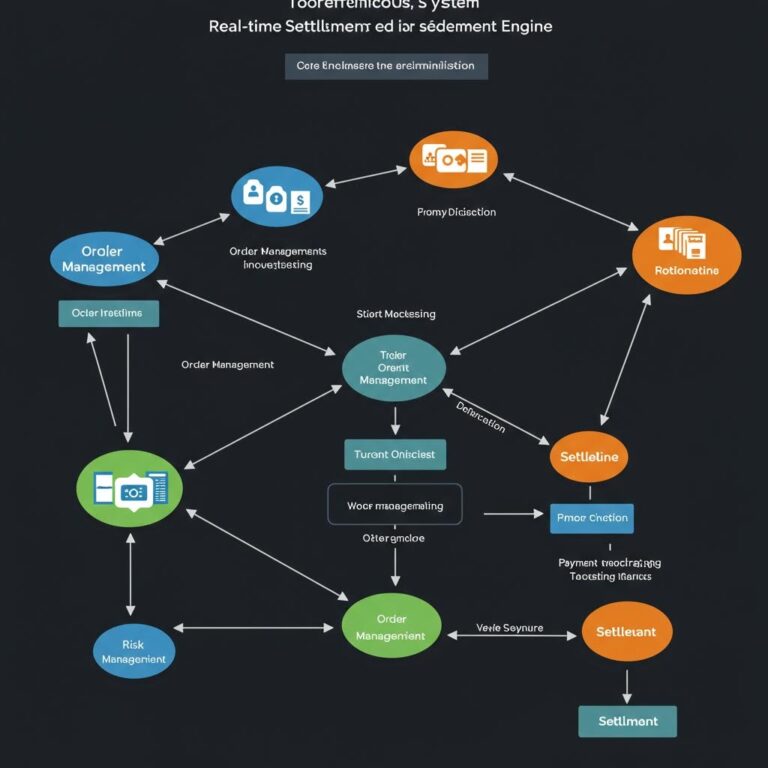The Made-up Win: Seeing Fake Success
How We Fool Ourselves
Our minds act like smart builders, making up stories of winning that may not be true. With things like selective memory and confirmation bias, our brain sorts out info to make us feel like we are reaching our goals, even when we are not.
What’s Going On in the Brain with False Wins
The link between the prefrontal cortex and the limbic system makes us think we won where we have not. This mix-up in the brain leads to cognitive dissonance, where what really happens and what we think happened do not match.
How We Often See Fake Wins
Acting Patterns
- Celebrating too soon before real results are in 카지노솔루션 분양
- Cheering for ourselves too much without real proof
- Not wanting to check and measure real outcomes
Ways to Check Reality
- Using strong review methods
- Setting clear goals to meet success
- Keeping track of all details
- Checking performance regularly
Breaking Away from Self-Fooling
To truly tell if we have reached success, both groups and people must use planned review plans. This means setting measurable goals, keeping track of steps taken, and welcoming checks by others to ensure real recognition of success.
The Puzzle of Self-Fooling
Self-fooling acts as a complex brain trick that lets us feel good about ourselves, even with proof against it.
This trick is common in competitive spots, where we make up stories of wins to protect our pride and keep a balanced mind.
Brain Basics in Self-Fooling
The role of self-fooling starts when two main brain areas get going. The prefrontal cortex, which is in charge of planning, works with the limbic system, which handles feelings.
This brings a “reality bending zone” where the brain changes memories to fit what we want to see, not what really happened.
What This Does and Why
Good and Bad Points
Self-fooling has both sides. While it protects our self-respect and lowers worry in the short term, it also stops us from learning and shifting our ways.
Studies show that top performers in many areas often have:
- Changed memories of past acts
- Bigger reasons for fails
- Putting down others’ wins
- Making up simpler to handle realities
This shows how self-fooling goes beyond just lying to oneself, but rather is a full brain system that remakes reality to keep us stable and feel good about ourselves.
Clear Signs of Fake Wins
Main Acting Clues
Selective focus is a top clue of fake win stories, where one only sees the small good parts and ignores big proof that says otherwise.
This brain filtering makes us see a world that lets these made-up wins keep going.
Signs and Patterns to Watch
Early celebrations show a clear sign of this problem, marked by claiming victory before the real checks confirm any success.
People show too much self-praise and do not want to look closely at their claims, often changing clear fails into wins through big excuses.
Talking and Being with Others
Fighting style talking often shows up in these cases, seen in:
- Stopping info that doesn’t agree
- Changing the topic smartly
- Getting too mad when questioned
- Making groups that only agree
- Only liking info that backs up their views
Staying Away from Real Checks
The most clear sign shows in the strong avoidance of real checks. Those seeing fake wins often:
- Say no to normal success rules
- Stay away from numbers that can be checked
- Ignore tools from outside that check claims
- Make their own ways to measure
- Explain away bad feedback
This seeing patterns helps us spot fake wins early before they set as regular actions.
Why We Make Up Wins
The Brain Games Behind Fake Success Stories
Mind defense tricks are key in how people make tales of winning when faced with many fails or big setbacks.
When hit with these, the brain starts strong answers to keep our mind feeling ok and stable.
What Drives Made-Up Wins
Cutting Down Mind Pain
Mind hurt happens when life does not meet our hopes. The brain changes how we see things to lower this hurt, making a nicer view of our lives that fits what we hoped for.
Worry in Comparing With Others
In today’s very competitive spots, the need to show we have succeeded leads people to boost or make up wins.
This comes from a deep need to look good in front of others and keep a good spot in work and personal life.
Keeping Ourselves Safe
The brain’s built-in guards make happy lies that act like mind shields.
These mind tricks keep us wanting to go on and stop sad feelings, working as needed tools for keeping strong inside.
Not Knowing We’re Making It Up
We often don’t know we’re bending success stories, as these changes in the brain happen without us seeing.
The brain quietly shifts and fixes memories to make us look better, making these bends hard to spot and fix.
Stopping the Cycle of Fooling Ourselves: A Plan of Action
Getting to Know How We Fool Ourselves
Self-fooling works through confirmation bias and selective memory, making up ongoing fake tales about our wins.
To get out of this, we need a strong break from these set brain paths through actions based on real life.
The habit goes on through not seeing info that fights what we think while only taking in what backs up our beliefs.
Three Steps to Break Free
1. Track the Real Things
Put in place real record systems to catch all outcomes, no matter if they back up or fight what we believe.
Set clear numbers to meet and keep full notes of both wins and fails to know where we truly stand.
2. Bring in Outside Views
Build a group of honest watchers who give real checks. Their views show us where we’re blind and test thoughts that keep up self-fooling.
Regular checks make us answerable and keep a true view.
3. Check What We Think We Did
Create a strong system to see gaps that compare what we think we did against clear targets. This check opens our eyes to what we really did, making us face true performance levels.
Building a System to Check Wins
Set clear goals before starting any work.
Do weekly checks to compare what we say against real proof.
When mismatches show between what we think and real results, do an immediate deep dive to find the cause of the mix-up.
Ending the Cycle of Reinforcing Make-Believe
Watch and list mismatches between what we think and reality through strong checks.
This process breaks down the self-feeding cycle of made-up wins and sets up real ways to measure progress.
Regular reality tests and proof-based checks build lasting ways to really know how we’re doing.
Real Numbers vs. Feel-Good Numbers: Everything You Need to Know
Getting to Know How We Measure Things
Checking our work means knowing the difference between real numbers and nice but not helpful numbers.
Places often like numbers that make them look good while missing key signs that could really make them better.
Useful number work tied right to what the business needs is much more helpful than just looking at easy numbers like page visits or how many likes something gets online.
Three Steps to Make Sure Numbers Help
Money and Costs
Work numbers must clearly show they help make more money or cut costs. Without this clear link, the numbers just make us feel good but don’t really help.
Spotting Problems
Good numbers show us both what goes well and what doesn’t. Good signs to look for point out where things can get better, not just where things are going well.
Choices That Matter
Key numbers should make us think and change what we do. If changing numbers don’t lead to real actions or new plans, they are likely just feel-good numbers and not really useful.
Putting in Real Checks on How We’re Doing
Systems to check our work should focus on the truth even when it’s hard.
True numbers often make us uncomfortable by showing where we need to do better and asking for changes.
This push makes things better and keeps us focused on real goals and not just on looking good.
Main Points for Good Numbers:
- Measuring real impact on work
- Clear signs of problems
- Numbers that push us to act
- Tracking how money comes in
- Signs of saving costs
Learning From Real Fails: A Plan of Action
Why Looking at Fails Matters
Places need to look closely at fails to keep getting better. While many try to hide their fails, this stops them from learning from them, which could stop the same mistakes later.
Good plans to look at fails include three key parts: full notes, digging into why, and acting on what’s found.
Starting a Strong Plan to Look at Fails
A good plan to look at fails starts with getting all the data right after something goes wrong. This covers how well we did in numbers, what people involved think, and detailed notes on how things happened.
The next step uses set ways to find the main cause like the “5 Whys” method and Ishikawa diagrams, focusing on the big issues not just what’s on the surface.
The key last step is making plans that can be done and setting up ways to keep track of putting them in place.
Learning Well in Places that Work
Places that do well turn fails into chances to learn through:
- Keeping full logs of fails
- Often looking back at what went wrong
- Making what’s learned a normal part of how things are done
- Making plans to keep getting better
This structured way changes setbacks into good knowledge for the place, making performance better over time and making sure the place does well and keeps coming up with new ideas. By welcoming fails as chances to learn, places set a base for long-term wins and new ideas.
Building True Wins
Setting Real Goals for Success
Real work success needs setting true patterns of achievement based on things we can really check, not just easy wins.
Making real progress means keeping track of main signs of how well we’re doing, reaching big goals, and having results that we can really prove.
Three Steps to Check We’re Really Winning
1. Setting Clear Goals and How to Measure Them
Set clear signs of doing well at the start of any project, putting in place specific, measurable ways to see success.
Pick clear goals that match what the place wants to do and its big aims.
2. Keeping Track of How We’re Doing
Watch how we move forward through set check points, picking up real proof and how well we’re doing in numbers. Secrecy-Fueled Addiction in Korea’s Shadow Gambling Rooms
Put in place strong systems to keep track of how we’re getting better and checking our progress against set goals.
3. Making Sure Results Are Real
Check how well we did through people from outside and full checks on what we do.
Use checks from others to make sure wins are real and back up the truth of results.
Knowing Real Wins from Made-up Wins
Focus on how well we do over time rather than just one-time wins.
Look at long-term growth through numbers and real outcomes.
Build plans for winning based in solid proof, backing up big aims and how the place grows through real signs of doing well.


